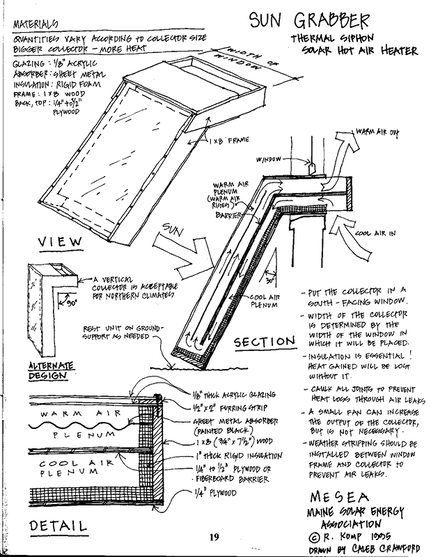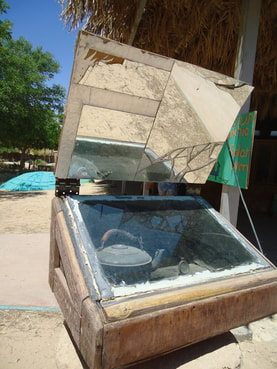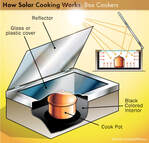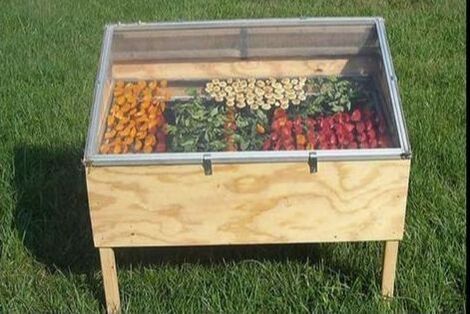What can the sun do for you?
What can't the sun do for you is probably a better question.
Photovoltaic

Heliosphere diagram
With out the sun Gaia wouldn't make it to far, the sun is our source of life as we know it. It grows our food and supplies us with multiple vitamins and nutrients and oh ya Oxygen too through a process called photosynthesis, but that's not what we're here to talk about. We're here to talk about capturing another dynamic of the sun called solar power. The sun is mostly made up of plasma and magnetic fields and is approx. 100 times the diameter of earth, 1,300,000 earths could fit inside the sun, it is around 11,000°F on the surface, that is a major source of heat and energy. The milky way galaxy where the sun resides is estimated to be over 13 billion years old, it takes 250 million years for the sun to rotate around the center of the milky way galaxy one time so that's some where around 52 rotations of the galaxy so far. Of the 50 nearest stellar systems earth's sun is the 4th largest in mass and possibly the biggest if you include the heliosphere that surrounds it that is created by the solar winds thrown off from the sun. Earth sits in side this heliosphere, in fact all of our systems planets do as it reaches beyond Pluto. Earth rotates once in 24 hours, the sun rotates once in 27 days. As it rotates it makes things move inside of it and one of those things is an energy particle called a photon. Photons start in the center of the sun and take approx. 1 million years to work their way to the outside surface at which time they are hurled off of the sun and reach earth with in 8 minutes, that is a trip of more than 90 million miles. When these photons smash into the earth in their energy form they produce many different outcomes and one of those outcomes is electricity when they are captured on silicone based materials creating what is called the photovoltaic effect (PV) which harness and stores part of the photon called an electron as energy or sends it directly to its intended purpose. Thus "SOLAR POWER" and it is abundant and it is free and it is clean. I guess you could say it's "Proper".
Solar Power Electric
In one hour the sun produces enough energy to meet the earths needs for one year.
-Solar power use has grown at a rate of 20% globally for over the last 10 years. -A solar power system generally pays for itself within 5 to 7 years. (and getting cheaper) -Electricity and Solar is measured in Kilowatt hours- (kWh) -1 Kilowatt = 1000 watts. That's 10 - 100 watt light bulbs turned on for one hour. -The average household in America uses 1200 (kWh)'s a month. Give or take depending on the size of the household and geographic location. -A 1 Kilowatt system would only need 100 square feet of collector panels to operate. -The average P.C. computer uses around 150 watts an hour with normal use (8 hrs per day) that's 1200 watts or 1.2 kilowatts, times that by 365 = that's 438 thousand watts a year or 438 Kilowatts, at an average of 0.20 cents a (kWh) that's around a $88 a year to run a computer on an average. A lap top runs around 80 watts. - 1 kilowatt of solar power can reduce the use of up to 175 pounds of coal - it can stop up to 300 pounds of Co2 from being released into the atmosphere - and up t0 100 gallons of water from being used. - The United States is 5% of the worlds population but we consume over 23% of its energy. - Solar panels will last up to 20 yrs + Up to 50 yrs with proper maintenance. - Learn more at LEARN ABOUT SOLAR GOVERNMENT SOLAR PROGRAMS FEDERAL/ Residential -GOVERNMENT PROGRAMS <click for more Incentive amount: 30% of the total PV Solar System cost (yes the government will pay for up to 30% of your solar system, it says 2013 but the program has been extended into 2016) Available to: All homeowners (not rentals) Eligible sizes: All system sizes End date: 12/31/2016 Other incentives are available on a STATE and LOCAL bias. <click for more |
|
Kilowatts-ShmillowattsUnderstanding "Watts" really going on.
Understanding Kilowatts and amp's and electricity can be confusing. This is a simple way of thinking about it. Watts are levels of energy, the higher the level of watts needed for a device the higher the amount of energy that is being used, think of it as turning up the volume on your stereo. Things that use electricity use watts of electricity to operate them. Your computer, your T.V., your microwave, your toaster etc all use watts to operate but they all use different amounts of watts for different lengths of time. All of these devices draw energy from the electrical grid. So if you have a 60 watt bulb that means that that bulb will use 60 watts of electricity every hour, all watts are rated by the hour. The electric company measures their product in kilowatts which is 1000 watts. Every time your household devices use a kilowatt of electricity the electric company charges you a set price. Look on your electric bill to see what you are paying and how much you use every month. So we all no what happens when we touch live wires, instantly we are sent on a vacation to the other side of the room and then maybe a quick stop at the hospital and maybe worse. The reason for this is current, current is the juice that flies through the lines to power our systems, but the true culprit here isn't volt's and watts it is Amps. Amps determine how hard the current is flowing out of the lines, the higher the amp the harder the push and this is what sends you across the room on your keester. All of this is potentially dangerous stuff but with a little research and knowledge gaining you can figure it out and gain a basic understanding of what is needed and the safety precautions needed to take. I know it is all a little confusing at first but just wait until you have to figure out cubic units of gas for your biogas system, you better have a full pot of coffee and a bottle of aspirin for that one.
.
Solar PV Radiation chart (Enlarge)
To learn more about Watts,Volts and Amps go here> "ELECTRO"
For even more information on solar power , click here >>SOLAR< < learn more about our SUN here >> THE SUN << Learn what a light year is here >> LightYear << Solar Window Heater Sun Grabber window solar heater. Sun Grabber window solar heater.
Solar window heaters are one of the most easiest and efficient ways to capture the suns power. If you have south facing windows that open then you are in luck. We have all felt the warmth of south facing wall in the winter and remember how natural and comforting it was, well now you can capture the energy on clear sunny winter days and bring inside. Obviously this isn't a main heat source for winter months but it can be a secondary one helping to cut back on fuel needed. You can help heat the house through the day to save on wood, coal, oil or what ever it is that your using to heat with. This is passive solar capturing in it's Primal form.
Solar Cooker
Solar Cookers are exactly that, cooker's that work off the solar energy of the sun. A box is constructed and lined with a reflective surface, a cover fixed of a clear materiel to allow the suns rays to pass through but holding the heat in, a thick peace of glass is the best materiel for this if it is available. A secondary lid can also be added to help with reflection. You do not want convection (heat movement) in these cookers so they should be as tight as possible, especially in colder conditions. Outrageous temperatures can be achieved through this method making it possible to cook allot of food and once as well as pasteurize liquids if needed. There are many different cookers and styles, this is a project worthy of anyone's consideration, possibly the cleanest and free-est way to cook your food. It takes a little while to get going but once the ideal temperature is achieved there is no stopping it, campers and mountaineers alike know to start their meals early and let the sun do its thing through the day. As a last resort you should have some sort of plan for a make shift solar cooker available to you. If you loose power and or potable water this may save you and your family's life, you will be able to distill water and cook food.
Here are some links to plans and info, Enjoy. National Geographic SOLAR COOKER PLANS WIKI SCI-net SOLAR WATER HEATER
Solar water heaters are coming into their own vary quickly, almost every commercial building now incorporates this system to one extent or another to either heat the water or a Ethylene glycol for infloor heating system and why not, after the initial cost it is free. In these days of high electricity prices this system can really help to reduce the power bill. If you're are sourcing your electricity through solar this will help alleviate the power bank demand. The sun hits a series of tubes heating them up as water is circulated through them transferring the heat until it is needed at the tap. Now this has obvious down falls such as the sun only shines a certain amount of time each day. The circulation process helps to store the heated water in a tank that needs less electricity to keep hot through the day and into the night. By morning your elements will probably need to kick back on to heat the water, but paying for 8 hrs of hot water is better then paying for 24 hours. Not all systems use the fin or tube system like you see in the picture, some are just big old tanks that sit in the glory of the sun heating away, without the circulation component these systems are one and done usually. Once the days hot water is used up your out of luck until tomorrow.
Solar food Dehydrator
he sun can be used to dehydrate food for both flavor and storage, A dehydrator removes the moisture from the food so that the decomposition process is greatly reduced allowing for long term storage. You can also make things for immediate use such tomatoes and fruit snacks.
Direct sunlight is not the best option for long term storage. Direct sunlight can break down a foods natural vitamin and nutritional content. A tower system is the most effective way to dehydrate fresh foods. A tower system has a warming chamber that is heated by the sun and then the warm air is pushed up through the food on a series of screens and the moisture in the food is released through this process. There are different systems and theories, There is the air up and the air down system. Air up sytems are when your heated air comes in the bottom and pushes up through the food, This tends to take longer but preserves sugars and flavors, System Air down is where the heated air comes from the top down to the bottom and then out a chimmney. This system is much faster and efficient because pulls the moisture to the bottom where it naturally wants to go. And then is just the direct sunlight that people do for such things as Tomatoes and cherries and other foods that are usually infusing with oils or other flavorings. There is no cut and dry ( ha, ha pun indented) system, It all depends on your needs and desires. There are many applications that you can use a solar dehydrator for, fruits, Vegetables, Herbs, Flowers, mushrooms and much more. You can even incorporate a smoking system for more flavors including packing in oil with multiply sundry's . See the links below for more ideas and plans for your own Dehydrator. If the final product is vacuum packed it can last up to a year in the fridge or a good cool pantry or cellar. Over a year in the freezer. check out Stilltasty.com for more info on storage times and applications. Mother Earth's Solar Dehy. Pass through Solar Dryer PDF Gujarat Technological University |
|









